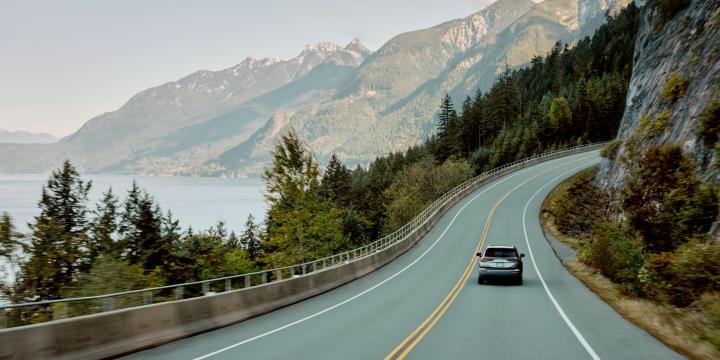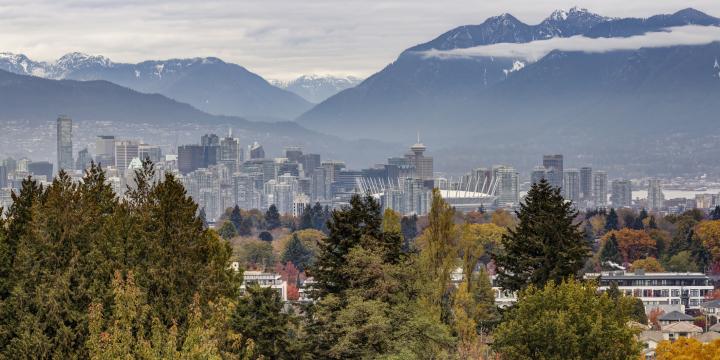
Discovering Indigenous Cultural Landmarks During Your Visit to Vancouver
Discovering Indigenous Cultural Landmarks During Your Visit to Vancouver
Planning a trip to Vancouver? Beyond the city’s scenic skyline, ocean breeze and urban adventures lies something far deeper: land, stories and cultures that stretch back thousands of years. These are the ancestral, traditional and unceded territories of the xʷməθkʷəy̓əm (Musqueam), Sḵwx̱wú7mesh Úxwumixw (Squamish) and səlilwətaɬ (Tsleil-Waututh) Nations. Whether you're a first-time visitor or a long-time resident, taking the time to learn about the Indigenous presence here is an essential and enriching experience.
This guide to Indigenous cultural landmarks and experiences in Vancouver offers meaningful ways to connect with the lands you’re exploring. Each location shares a story of resilience, culture and belonging and reminds us that reconciliation begins with recognition.
X̱wáýx̱way / Stanley Park Totem Poles / Brockton Point
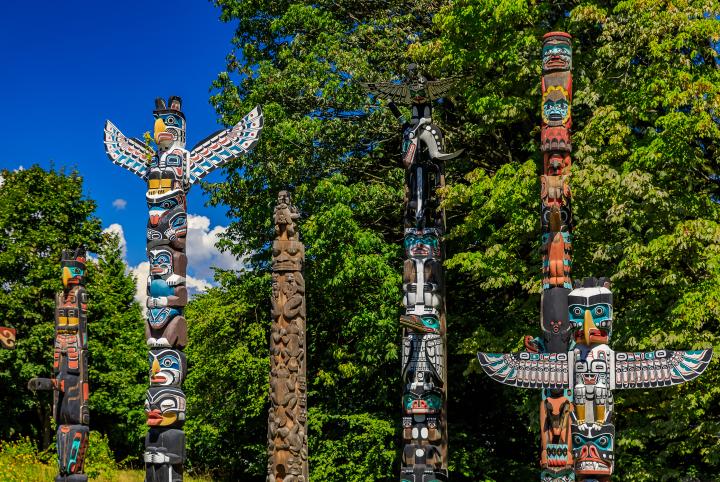
X̱wáýx̱way (Squamish Salish pronunciation: [χʷajχʷaj]) or x̌ʷay̓x̌ʷəy (Halkomelem Salish pronunciation: [χʷajˀχʷəjˀ]) ̓, rendered in English as Xway xway and Whoiwhoi, is a former Indigenous village located near Lumberman’s Arch in Stanley Park. It is estimated to have been inhabited for more than 3,000 years and served as a ceremonial gathering site for the Musqueam, Squamish, and Tsleil Waututh Nations. Today, Brockton Point is home to nine totem poles and three beautifully carved red cedar portals that honour the artistry, teachings, and traditions of local Indigenous communities.
>> Click here for directions to to X̱wáýx̱way / Stanley Park Totem Poles / Brockton Point
Stanley Park Siwash Rock
This prominent geological formation in Stanley Park was once known by the Squamish name Slahkayulsh, meaning “he is standing up.” According to oral history, a man was turned into stone by powerful beings as a consequence for breaking a spiritual code. Siwash Rock stands today as a sacred reminder of this story and the enduring cultural and spiritual connection Indigenous peoples have with the land.
>> Click here for directions to Stanley Park Siwash Rock
Prospect Point
Overlooking the Burrard Inlet, Prospect Point was a traditional lookout for Indigenous communities. It offered views of trade routes, surrounding mountains and was a key vantage for connecting with other coastal villages.
>> Click here for directions to Prospect Point
UBC First Nations Longhouse
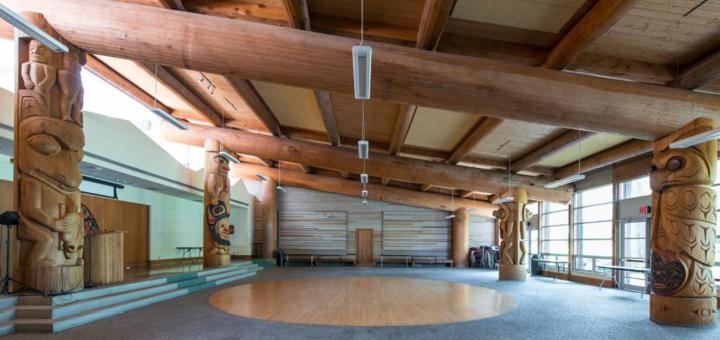
Image source: The University of British Columbia
Located at the University of British Columbia, the First Nations House of Learning is a dedicated space celebrating Indigenous culture, traditions and knowledge. Events, ceremonies and workshops are hosted throughout the year in partnership with various UBC departments. The building’s amazing architecture reflects the design of a traditional longhouse.
>> Click here for more information and directions
Musqueam Cultural Centre
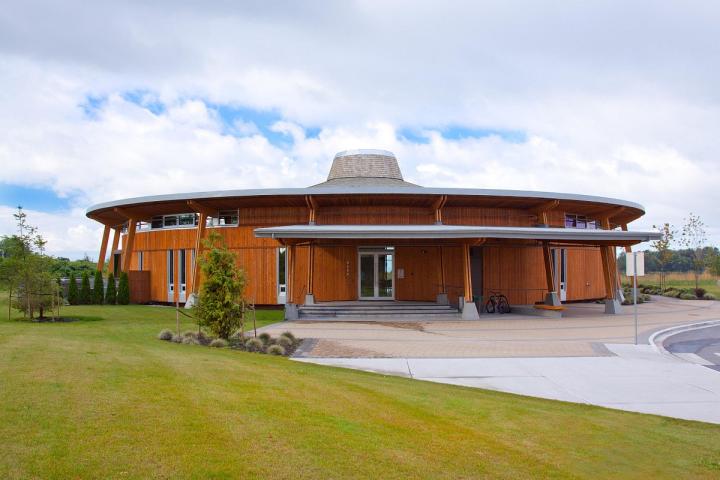
Image source: Musqueam Cultural Education Resource Centre and Museum
Located in the Musqueam community in South Vancouver, this centre houses exhibits and resources showcasing the history, governance and teachings of the Musqueam people. Visitors can learn about the community’s deep connections to land and water that have shaped their way of life for millennia.
>> Click here for directions to Musqueam Cultural Centre
Whey-ah-Wichen (Cates Park)
Cates Park, or Whey-ah-Wichen, meaning “faces the wind,” is a traditional Tsleil-Waututh site used for fishing, trade and gatherings. Today, the park is home to Indigenous-run businesses like Cates Park Paddling Centre and Takaya Tours, offering guided canoe and kayaking experiences led by Tsleil-Waututh guides who share stories, history and ecological knowledge.
>> Click here for directions to Whey-ah-Wichen
Skwachàys Lodge
Located in Vancouver’s Gastown, Skwachàys Lodge is a boutique hotel and Indigenous social enterprise that combines hospitality with Indigenous art and culture. Each room is uniquely designed by Indigenous artists and the building houses an art gallery and performance space. Proceeds support Indigenous housing and creative programming.
>> Click here for directions to Skwachàys Lodge
UBC Museum of Anthropology
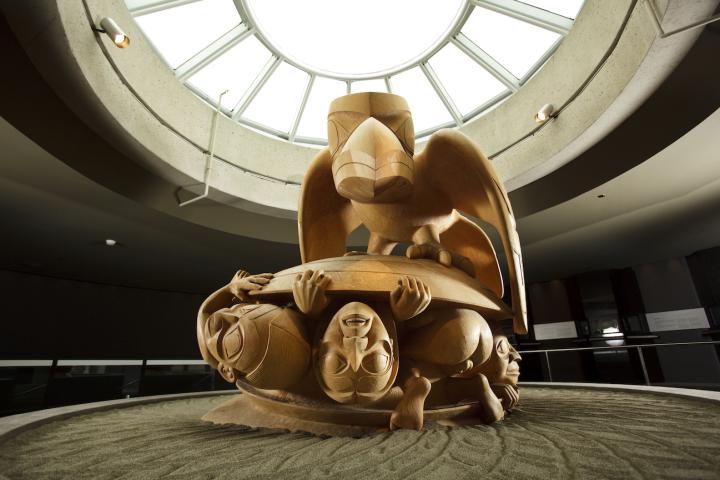
Image source: UBC Museum of Anthropology, photo by Goh Iromoto.
The Museum of Anthropology, located at the University of British Columbia, houses an extensive collection of Indigenous art, artifacts, and cultural objects from around the world, with a particular focus on the Indigenous cultures of British Columbia. The museum offers visitors a chance to learn about Indigenous histories, traditional knowledge, artistic expressions, and contemporary issues.
>> Click here for directions to UBC Museum of Anthropology
The Capilano Suspension Bridge
The Capilano Suspension Bridge, situated on the traditional territory of the Squamish Nation, has historical importance as a crossing point for Indigenous peoples. It played a vital role in their seasonal movements, facilitating travel across the Capilano River and connecting communities for trade, cultural exchange, and resource sharing.
>> Click here for directions to The Capilano Suspension Bridge
St. Paul's Residential School Memorial
The St. Paul's Residential School Memorial honours the Indigenous children who were forcibly taken from their families and sent to St. Paul's Residential School. After being vandalized in January, the memorial has been repaired and re-erected in a ceremony that brought together the community, residential school survivors, and local leaders. This memorial, located outside the former Sisters of St. Paul convent, serves as a somber reminder of the more than 2,000 children from the Sḵwx̱wú7mesh (Squamish), səl̓ilwətaɁɬ (Tsleil-Waututh), shíshálh (Sechelt), and xʷməθkʷəy̓əm (Musqueam) Nations who were impacted by the residential school system. Its restoration symbolizes a commitment to healing, remembrance, and honouring the resilience of Indigenous communities.
>> Click here for directions to St. Paul's Residential School Memorial
Important sites outside of Vancouver
Squamish Lil'wat Cultural Centre (Whistler)
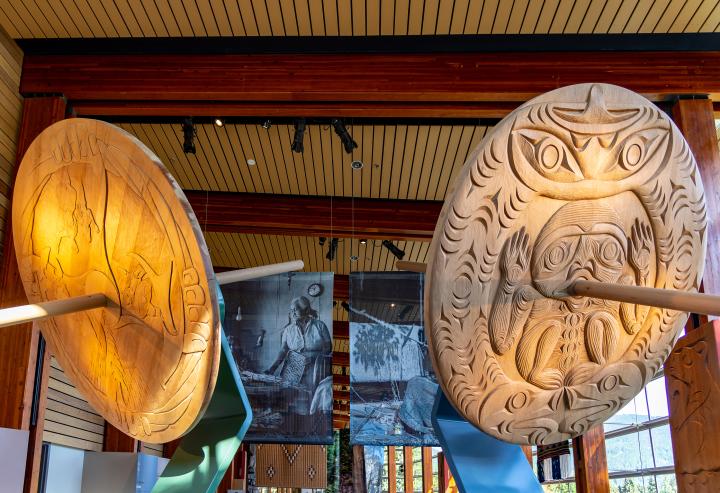
The Squamish Lil'wat Cultural Centre, located in Whistler, offers a deep dive into the cultures of the Squamish and Lil'wat Nations. The centre showcases traditional artifacts, art, and exhibits, allowing visitors to learn about the distinct histories, languages, art forms, and cultural practices of these two neighbouring Indigenous nations.
>> Click here for directions to The Squamish Lil'wat Cultural Centre
Siy’ám’ Smánit – The Stawamus Chief (Squamish)
Siy’ám’ Smánit, known as The Stawamus Chief, is an iconic granite monolith located in Squamish, British Columbia. It holds immense cultural and spiritual significance to the Indigenous Squamish Nation, who refer to it as Siy’ám’ Smánit, meaning "Mother of the Wind." The Stawamus Chief is a popular destination for outdoor enthusiasts, offering hiking trails that provide stunning panoramic views of the surrounding mountains, forests, and Howe Sound. As visitors ascend the trails, they can appreciate the cultural heritage of the Squamish people and the deep connection they have to this majestic natural landmark. Exploring Siy’ám’ Smánit offers an opportunity to admire the natural beauty of the area while recognizing the enduring presence of Indigenous cultures in the region.
>> Click here for directions to Siy’ám’ Smánit
Kwi Awt Stelmexw (Capilano River Regional Park)
Kwi Awt Stelmexw, encompassing the Capilano River and surrounding lands, holds historical importance for the Squamish Nation. It was a significant area for resource gathering, including fishing and hunting, providing sustenance and supporting the social and economic well-being of the Squamish people for centuries.
>> Click here for directions to Kwi Awt Stelmexw
---------
This piece is consolidated by YWCA Hotel Vancouver as an ongoing effort to highlight or showcase Indigenous operators and promote Indigenous history and culture as our efforts toward reconciliation. Whether we are exploring these occupied lands as tourists or operating here as the tourism industry, it's important to know that we are uninvited guests on these traditional ancestral and unceded territories, and that we are inadvertently benefiting from this country's colonial legacy.
YWCA Metro Vancouver operates on the ancestral and unceded territories of the xʷməθkʷəy̓əm (Musqueam), Sḵwx̱wú7mesh (Squamish) and səl̓ílwətaʔɬ/Selilwitulh (Tsleil-Waututh) Nations. We also acknowledge the unceded territories of Semiahmoo and the Stó:lō peoples, including the Katzie, Kwantlen, Kwikwetlem and Qayqayt Nations, as well as the treaty lands of the Tsawwassen Nation.
